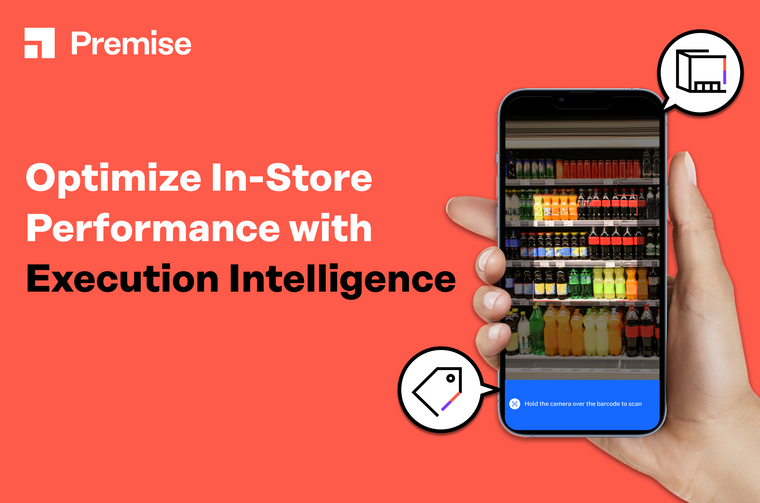How receipts change the way we understand consumers
If we can make insightful use of receipts for market research, we’ll enhance our future understanding of offline shoppers. Here’s how.

It’s possible to track shopping behaviour and intentions in E-Commerce. But it’s hard for FMCG brands to understand offline-retail behaviour. Currently, brands use various data streams to puzzle together a rough picture of offline shoppers, their motivations and behaviour.
Even though brands have digitised retail stores, it’s still timely and expensive to acquire and merge the data needed to understand what happens in them. Receipt data can help overcome these hurdles and increase how much brands understand their customer’s behaviour offline.
What receipts can reveal about shopping behaviour?
Roughly 20 billion transactions are performed in German retail each year. Due to the receipt obligation, each purchase’s details go into a huge database – the potential for which we haven’t yet exhausted. Receipts reveal the following information about shopping behaviour.
Store and Location
The issuing retailer and location are at the top of the receipt. This information can help us to understand and compare shopping behaviour in different regions.
Items and issued item price
Often, brands don’t know the exact price their products were sold at (as the retailer decides the final price). Receipt data gives us a clear understanding of pricing and the impact it has on shopping behaviour. By giving an overview of which products are bought together, receipts create a deeper understanding of up- and cross-selling potential.
Overall cart value and size
Understanding cart values and the percentage which products account for helps to develop strategies and support valuable arguments for listing negotiations.
Transaction Timestamp
Understanding when shoppers buy is an important insight for marketing campaigns, placements and targeting.
Payment Method
How consumers pay depicts their affinity for payment technology and how progressive their mindset is.
How to extract and use receipt data
To make use of receipt data, paper receipts need to be turned into structured data. This can be achieved using Optical Character Recognition. By using open-source product databases and use retailer-specific APIs, it’s possible to match the name of receipt items with the actual product.
This information can be supplemented by asking the people who are sharing their receipts to provide additional information.
Collecting receipts/building a receipt research platform
To identify trends and shifts in buying behaviour and draw conclusions on behavioural schemes or forecast a product’s development, you need a constantly evolving receipt stream. This should include all shops, regions and buyer groups over time. Panellists then need rewards for uploading their receipts. However, especially young target groups are searching for added value and seamless participation opportunities. Future research platforms will have to address these needs.
Matching benefits for research and panelists is a must in the future
The way shoppers receive receipts has changed, so research platforms that analyse receipt information must be able to handle them in different formats: digital receipts (QR-code or email), PDFs or images and scanning printed receipts.
Enhancing receipt data
To understand the individuals behind receipts, receipt data needs to match with anonymised sociodemographics. This provides a complete understanding of verified buying behaviour across target groups. This means receipts research now knows who buys what, as well as where and when they buy.
Where is the why?
To understand why we must rethink receipts: instead of only using them as a data source, they can even be used for targeting and surveying verified shoppers based on their behaviour. Doing so, research is preventing socially desirable answering behaviour that occurs when users become aware of targeting and adapt their answers to be eligible for participation.
Receipts are the key to future understanding of shoppers
Receipt research makes it faster and easier to receive verified, comprehensive retail data while solving several limitations research usually faces.
Closing the say-do-gap
When asked which role sustainability plays in their everyday grocery shopping, participants tend to ascribe great importance to it. Nevertheless, especially during the current period of high inflation, shopping behaviour measured through receipts shows a higher orientation on prices. For brands, the combination of self-disclosure and behavioural statistics offers a great opportunity to understand their target group’s perception of sustainability and their everyday life struggles.
Understand behavioural shifts in real-time
Consumer behaviour is ever-changing. Until now, brands mostly assumed that their own adaptions caused changes in sales. Through monitoring shopping behaviour over time, these trends can be identified on the go. Surveys among verified shoppers complement these insights by adding the consumer’s perspective to these trends.
Conclusion
Receipt research can give us a reliable understanding of offline shopping behaviour while minimising the risks of typical biases in market research. The future of receipt research will strongly be influenced by the rise of AI and the ongoing digitalisation of brick-and-mortar retail. While receipt research is an established research method, AI’s rise and the increased digitisation of bricks-and-mortar are likely to help it evolve and add greater value.
Ruth Rottwitt
Content Marketing Lead at Good JobsWith a strong background in strategic communications Ruth Rottwitt is driving communications and marketing at German receipt research startup epap.


